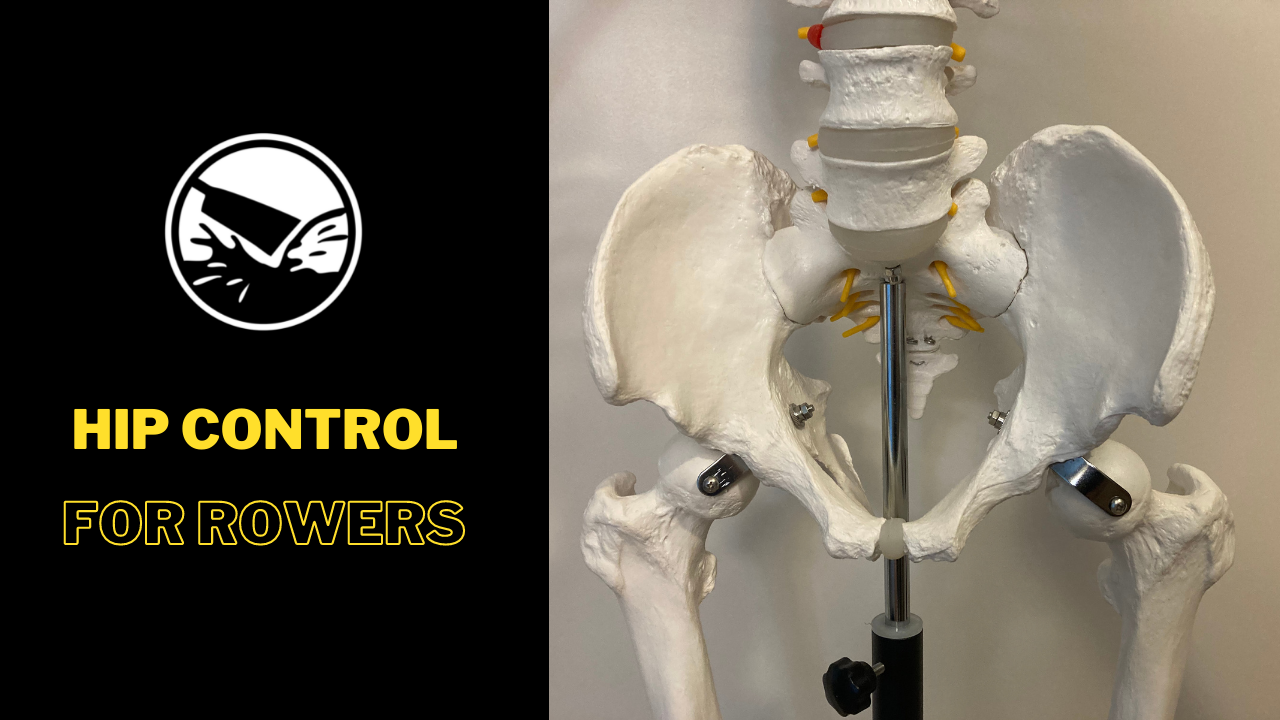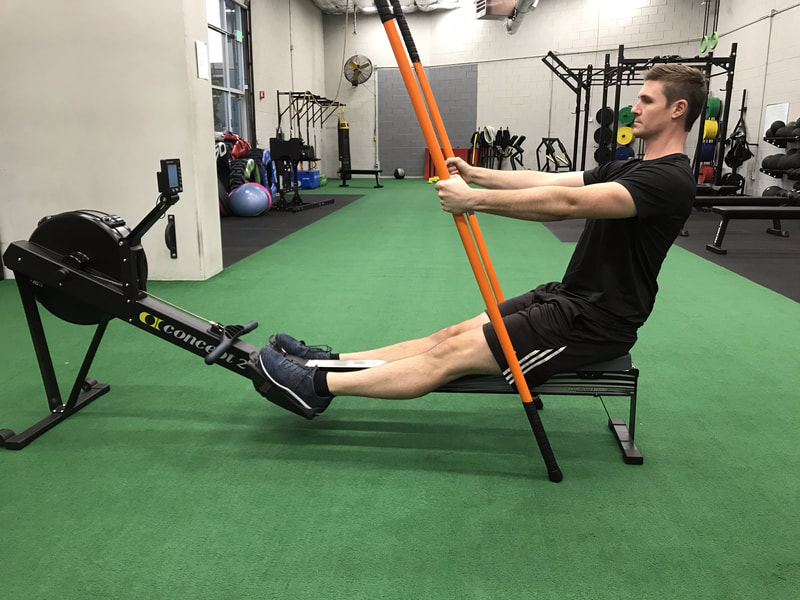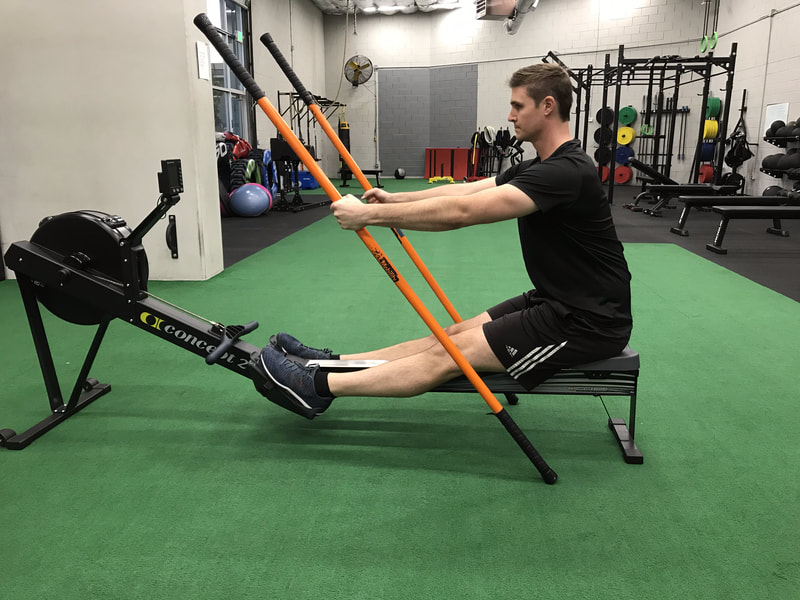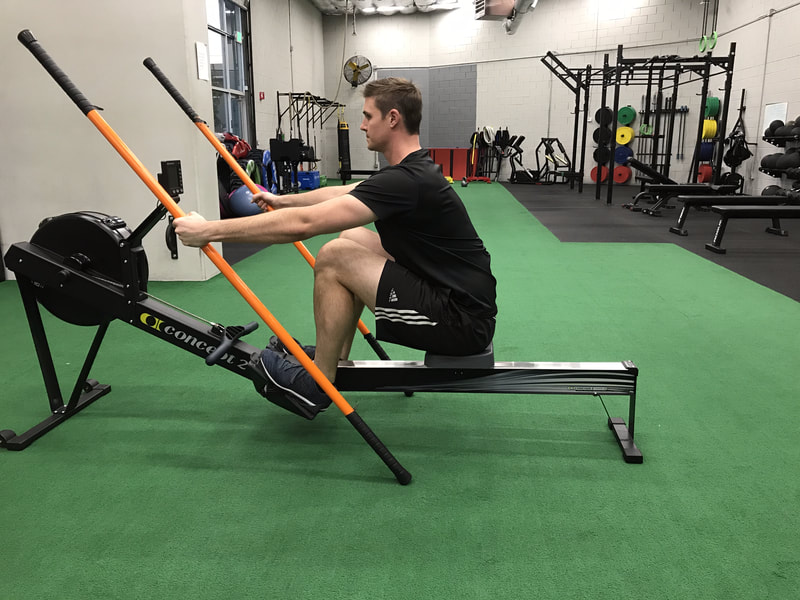"Maintaining a neutral spine can increase our ability to transfer force between the footplate and oar handle, as well as decrease the load on the spine". Hip Control Video Why Hip Control? If we can train to have better control over our hips we might increase our rowing performance and decrease our injury risk. Researchers recently found that it wasn't the total amount of hip motion that improved rowing performance, but the consistent control over that hip motion (1). Training with a focus on hip control results in the maintenance of a neutral spine. Maintaining a neutral spine can increase our ability to transfer force between the footplate and oar handle, as well as decrease the load on the spine. Training for Hip Control Training for hip control should be done in this order without skipping steps. Make sure you have the required amount of hip motion then add layers of challenge step-by-step. Think of this order like building a six-story dream home. First we need to lay the foundation, then we add the next layer in the appropriate order, until we're finally done with our dream home. It wouldn't make sense to start the building process at the roof. 1) Prerequisite: do you have the required amount of hip motion? 2) Holds: can you control this motion in the absence of movement? 3) Movement: can you control your hips with an added movement challenge? 4) Speed: can you control your hips as we add speed? 5) Load: can you control your hips under load? 6) Fatigue: can you maintain control as you tire? 1) Prerequisite Hip Motion There are many different ways to screen the hip but the active straight leg raise screen has been one of the best screens to identify if you have the proper amount of hip mobility before we begin to further challenge your movement. Do you have the key to the door or do you have to bust the door down to get inside? 2) Holds Strength based: Choose any movement with little to no movement that challenges the hips and spine to maintain neutral. Some examples include the following: I like to start with 2x10 seconds and build to 6x10 seconds. Then I'll increase the challenge of the exercise itself. Rowing based: 1) Erg sticks (sit long and tall, drive the sticks down into the ground. Feel your core engage at each position. 2) Pause drills (any drill coaching position). Movement examples Strength based: Choose any unloaded slow movement that challenges the hips and spine to maintain neutral. Some examples include the following: I like to include these movements as part of the warm-up or as part of the workout itself completing 3-12 repetitions of each. Rowing based: 1) Pause every 3 strokes -> 5 strokes -> 10 strokes 2) Lower rate steady-state work. Speed examples Strength based: Choose any unloaded quick movement that challenges the hips and spine to maintain neutral. Some examples include the following: Rowing based: Higher rate work emphasizing drive speed. Load examples Strength based: Choose any loaded movement that challenges the hips and spine to maintain neutral. Some examples include the following: Rowing based: 1) Rowing by pairs or fours in an eight 2) Rowing into a headwind. Fatigue examples Strength based: Choose any set of loaded movements that challenges the hips and spine to maintain neutral under fatigue. Some examples include the following complex: Clean, Press, Squat, Row, Deadlift. Choose one weight and complete all reps of all exercises before resting. Choose a weight that challenges you but allows you to complete the entire complex without technical breakdown. I'll initially start with 1-2 sets of 8 reps building to 3 sets of 12 reps. Rowing based: Challenge rowers with increasingly more difficult training sessions without allowing for technical breakdown. Keep Hip with Control. (1) Fumoto, M., Sera, Y., Azuma, K., Sato, K., & Matsumoto, H. (2020). Body motion and rowing performance: association between hip angle and rowing performance: a pilot study. The Keio Journal of Medicine, 69(3).
0 Comments
Leave a Reply. |
Author
Blake Gourley holds a Masters of Science in Sports Performance Training and has over 12+ years of experience working with rowers. Read more Categories
All
Archives
August 2023
|




 RSS Feed
RSS Feed